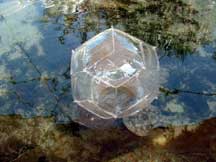|
|

|
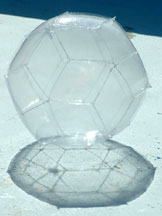
|
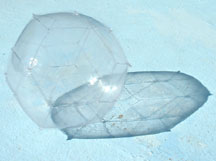
|
I have included the rhombic triacontahedron because almost all of the vertices of the platonic solids combined are on this one structure with 30 faces, 32 vertices, and 60 edges. Twelve of its vertices are shared by the icosahedron, and the remaining 20 vertices are shared by the dodecahedron. However, since all eight vertices of the cube are shared with vertices of the dodecahedron, and all four vertices of the tetrahedron are shared with vertices of the cube, this leaves only the six vertices of the octahedron unaccounted for on the rhombic triacontahedron. These six vertices of the octahedron sit on midpoints of six edges. There are two different lengths of radii for the vertices. The 20 vertices that are shared by the dodecahedron/cube/tetrahedron inscribe into a smaller sphere than the 12 vertices shared by the icosahedron. To see moving transitions that go from a cube to a dodecahedron to a rhombic triacontrahedron and finish up as an icosahedron, watch this exciting Quicktime Movie made by Reimund Albers of the University of Bremen. Here is another view of the rhombic triacontahedron that gives some colorful visuals of the vertices discussed above. |
||
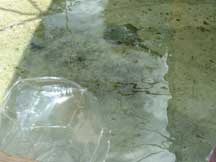
|

|
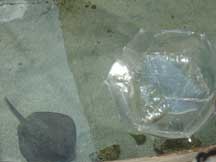
|
|
||
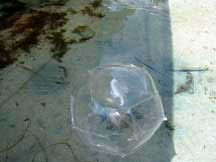
|
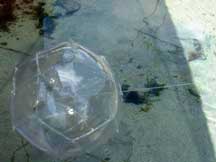
|
A close look is advised here. I don't want to give it away totally, but look carefully at the sand in the two pictures directly above! It might be necessary to enlarge them. |
|
| Frequently Asked Questions |
|
The contents of this web page are © Copyright Gayla Chandler. Permission must be sought for all but personal use for study or enjoyment. |
